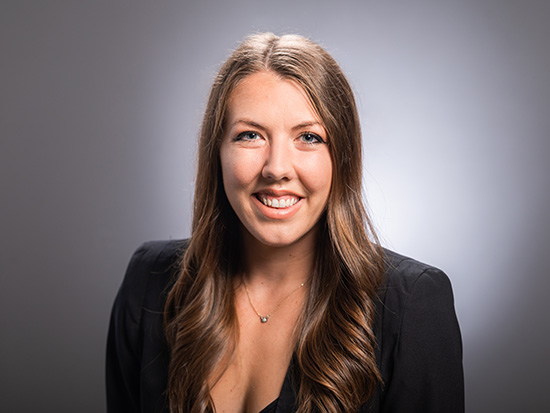A 21-year-old junior majoring in electrical engineering, Moore seems a bit young to have this kind of resource at his disposal. But as an employee with EITD, part of UAB’s School of Engineering, the Atlanta native tests his high-tech knowledge and skills against some unique challenges. Currently, Moore is harnessing digital technologies to make exercise and physical rehabilitation more engaging—and perhaps more effective—for people with disabilities.
Together with Nick Bowen, a programmer and junior majoring in computer and information sciences in the College of Arts and Sciences, Moore is developing three projects to benefit individuals at Birmingham’s Lakeshore Foundation, an internationally recognized leader in fitness and disability. But they also could signal the future of exercise for everyone:
- Imagine going to the gym, stepping onto a treadmill, stair machine, or bike, and putting on a virtual reality (VR) visor. Suddenly you’re in a digital world where your steps and pedaling actually get you somewhere. Meanwhile, the machine sends the visor your vitals and details including speed and acceleration, which interact with the VR software. Speed up or slow down, and the VR world keeps up with you. Moore and Bowen initially based this new interface on a forgotten piece of software written in 1997 known as CSAFE. However, during the holidays, when most students are taking a break from school, they decided to change course and build their own monitoring device. They hope the end product will eventually help programmers improve the “fitness gaming” field.
- Nintendo’s Wii Fit helped pioneer the use of gaming technologies for exercise, being adopted by health clubs and rehabilitation centers alike. Now Moore and Bowen have taken a Wii Balance board “and made it ginormous for wheelchair users,” providing people who could not use standing peripherals with a new exercise option, Moore says.
- The two students also are collaborating on a better, more precise fitness app. Their Walk and Roll project uses ultra wideband radio frequencies to locate the user within centimeters, providing more accurate details about distance traveled, time per lap, and other measures of progress.
Kitchen appliances to space fridges
Moore’s expertise with engineering, coding, and robotics has its roots in his experience as a young, precocious, destructive tinkerer. As a child, he would take apart old kitchen appliances. If his parents no longer wanted something, “it was probably in pieces by the end of the day,” Moore recalls. “Then I would learn to put it back together.”When it came time to select a university, UAB’s urban environment attracted Moore. “Seeing a college surrounded by a city, I saw a large amount of potential”—particularly the chance to find a job and build connections throughout his college career—Moore says. “I was considering other major engineering schools, but the opportunity base here per the amount of students is just phenomenal.”
One of those opportunities—the chance to present at a symposium in Washington, D.C.—brought Moore into EITD’s orbit. That’s where he met Lee Moradi, Ph.D., EITD director and associate professor of engineering. While Moradi finds most of EITD’s undergraduate employees through his courses, observing Moore and working with him at the symposium impressed him. “He stayed up until 3:00 in the morning making sure his equipment was up and running,” Moradi recalls. “Then he was up at 7:00 to present it. I knew we needed to hire him.”
Soon, Moore was devising a sophisticated technology to reduce fridge buzz. EITD’s big project is Polar, a NASA-commissioned space freezer. Joe’s solution to keep Polar quiet: active noise cancellation, the same technology used in headphones to offset incoming noise frequencies with a counteractive noise. Moore’s promising concept uses a speaker and microphone to “catch sound of the cryocooler making a lot of noise and output it through the ductwork to cancel out the noise.”
New views of technology
Now, Moore has 24-hour access to his EITD lab, where he can turn his ideas into something tangible. “Can I build or fix it? Usually I can, because I have all these resources,” Moore says.He points to his “baby,” the subtractive manufacturing machine, as an example. It’s a hybrid of a 3-D printer and an automatic wood router. “You put a block of wood in there and create a design,” Moore explains. “Then the machine routes out a 3-D model backwards.” He’s currently working on getting a better enclosure for it, because modeling, as it turns out, can be messy. When he first used the machine, the resulting sawdust took two days to clean, “and I was the person burdened with it,” he recalls.
After graduation, Moore hopes to continue working with EITD and to build a career around his passion for product development. “I want to do work that could potentially change the way we see technology as a whole,” he says.


